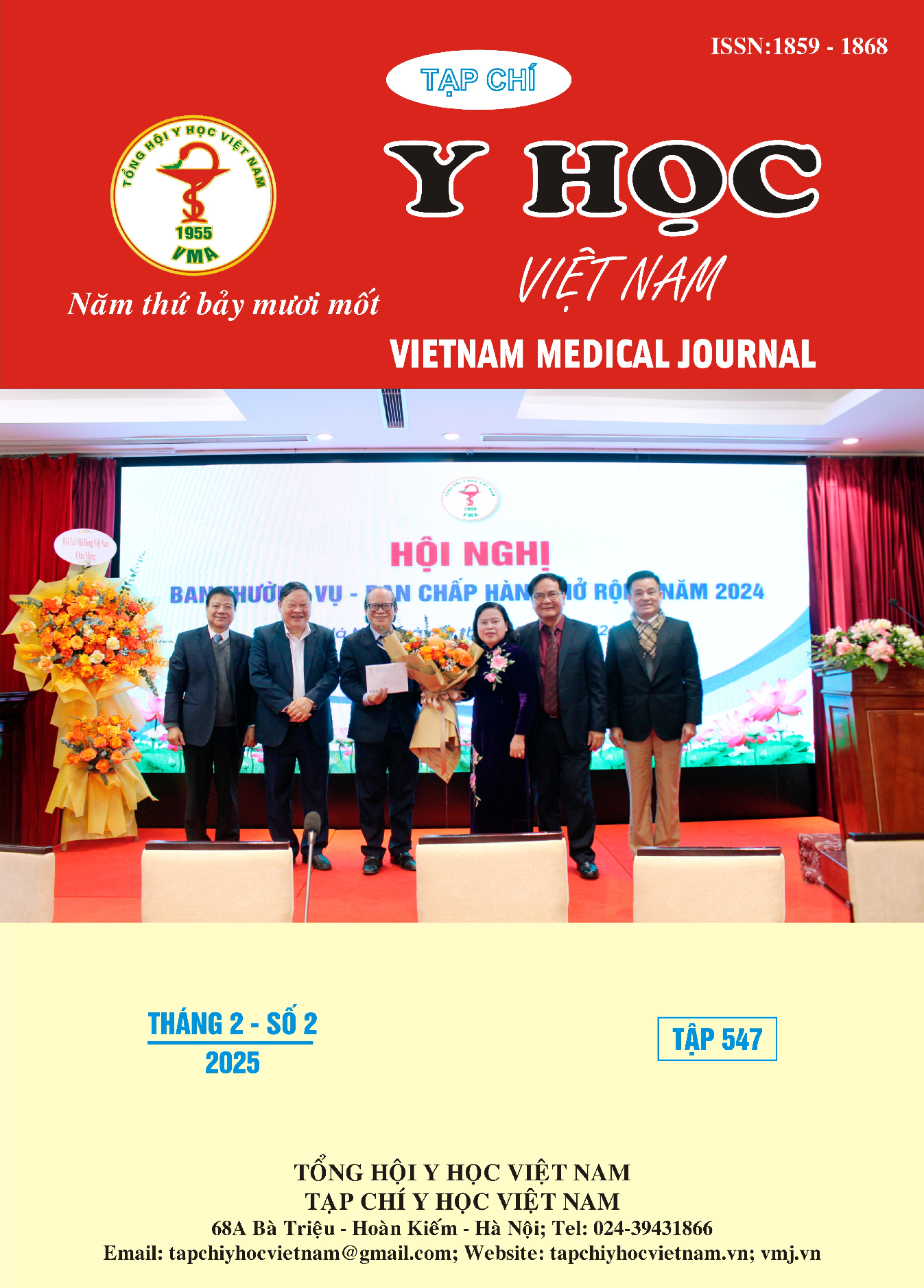THE VALUE OF ELECTROCARDIOGRAM FINDINGS IN PREDICTING TOTAL CORONARY OCCLUSION IN PATIENTS WITH NON-ST-ELEVATION MYOCARDIAL INFARCTION
Main Article Content
Abstract
Objective: To determine the sensitivity, specificity, positive predictive value, negative predictive value, and area under the curve of electrocardiogram findings in predicting coronary artery occlusion in patients with non-ST-elevation myocardial infarction. Subjects and Methods: A cross-sectional descriptive study was conducted on 197 patients aged 18 years or older diagnosed with non-ST-elevation myocardial infarction who underwent coronary angiography, electrocardiogram monitoring, and cardiac enzyme testing at the Tâm Đức Heart Hospital in Ho Chi Minh City from January 2022 to October 2023. Results: 39% of patients with non-ST-elevation myocardial infarction had total coronary artery occlusion (OMI group). There was an association between certain factors and total coronary artery occlusion, such as cardiovascular risk factors: The proportion of males and smokers in the OMI group was significantly higher than in the non-OMI group (p=0.039 and p<0.001), whereas in the non-OMI group, the proportion of patients with type 2 diabetes was higher (53.3% vs. 36.4%, p=0.02). Clinical characteristics: Diaphoresis was more common in the OMI group (48.1% vs. 30.8%, p=1.015). Patients in the OMI group also had a higher GRACE score (p=0.003). Paraclinical characteristics: White blood cell count, LDL-c, and the proportion of patients with regional wall motion abnormalities on echocardiography were higher in the OMI group than in the non-OMI group. Troponin T levels at all time points were higher in the OMI group than in the non-OMI group. PCI time was shorter in the OMI group than in the non-OMI group. The culprit vessel in the OMI group was often RCA->LAD->LCx, while in the non-OMI group it was LAD->RCA. The accuracy of electrocardiogram findings suggestive of occlusion: Sensitivity was 63.6%, specificity was 93.3%, positive predictive value was 85.9%, and negative predictive value was 80.0%. Conclusion: The proportion of patients with NSTEMI who have total coronary artery occlusion is 39%; electrocardiographic findings suggestive of occlusion have predictive value for total coronary artery occlusion in patients with NSTEMI.
Article Details
Keywords
NSTEMI, Coronary artery occlusion, Electrocardiogram, Predictive value
References
2. De Luca G, Suryapranata H, Ottervanger JP, Antman EM. Time delay to treatment and mortality in primary angioplasty for acute myocardial infarction: every minute of delay counts. Circulation. Mar 16 2004;109(10):1223-5. doi:10.1161/01.CIR.0000121424.76486.20
3. Khan AR, Golwala H, Tripathi A, et al. Impact of total occlusion of culprit artery in acute non-ST elevation myocardial infarction: a systematic review and meta-analysis. Eur Heart J. Nov 1 2017;38(41):3082-3089. doi:10.1093/eurheartj/ehx418
4. Pendell Meyers H, Bracey A, Lee D, et al. Accuracy of OMI ECG findings versus STEMI criteria for diagnosis of acute coronary occlusion myocardial infarction. Int J Cardiol Heart Vasc. Apr 2021;33:100767. doi:10.1016/j.ijcha.2021. 100767
5. Yusuf S, Hawken S, Ounpuu S, et al. Effect of potentially modifiable risk factors associated with myocardial infarction in 52 countries (the INTERHEART study): case-control study. Lancet. Sep 11-17 2004;364(9438):937-52. doi:10.1016/ S0140-6736(04)17018-9
6. Baro R, Haseeb S, Ordonez S, Costabel JP. High-sensitivity cardiac troponin T as a predictor of acute Total occlusion in patients with non-ST-segment elevation acute coronary syndrome. Clin Cardiol. Feb 2019;42(2):222-226. doi:10.1002/ clc.23128
7. Mortensen MB, Nordestgaard BG. Elevated LDL cholesterol and increased risk of myocardial infarction and atherosclerotic cardiovascular disease in individuals aged 70-100 years: a contemporary primary prevention cohort. Lancet. Nov 21 2020; 396(10263):1644-1652. doi:10. 1016/S0140-6736(20)32233-9
8. Gokhroo RK, Ranwa BL, Kishor K, et al. Sweating: A Specific Predictor of ST-Segment Elevation Myocardial Infarction Among the Symptoms of Acute Coronary Syndrome: Sweating In Myocardial Infarction (SWIMI) Study Group. Clin Cardiol. Feb 2016;39(2):90-5. doi:10. 1002/clc.22498


